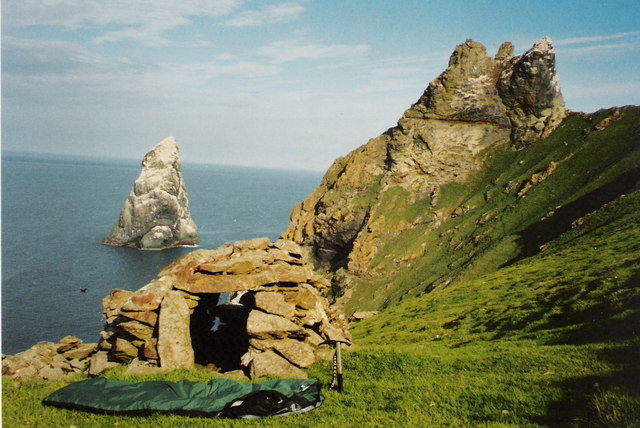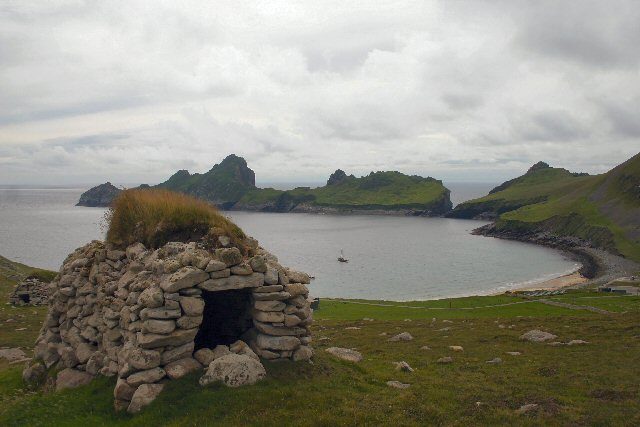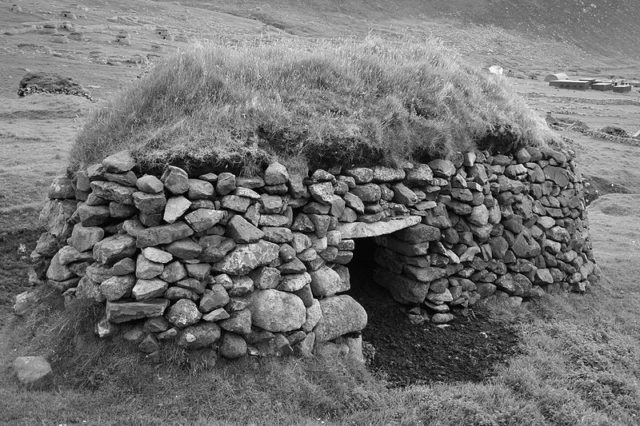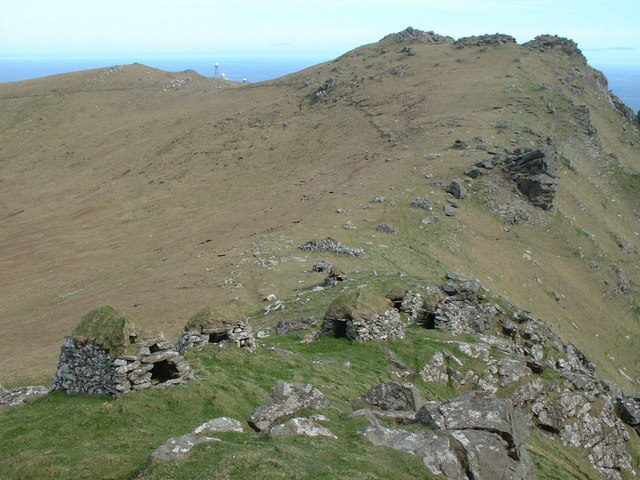The isolated archipelago of St. Kilda is located 64 kilometers from the European mainland in the North Atlantic Ocean. It is the most western of the islands in the Outer Hebrides of Scotland.
The main island is Hirta, which is known for its tall sea cliffs – the highest in all of the United Kingdom. Soay, Dun, and Boreray also make up the archipelago, with their land primarily used for grazing livestock and the hunting of seabirds.


The Outer Hebrides have been inhabited since the prehistoric period, but written records only document occupation from the Late Middle Ages. On Hilda, the medieval village was rebuilt in the 19th century, but due to the impact of World War I and the illness brought ashore by tourists, the island was evacuated in 1930.
One interesting feature of these islands is the cleitean. They are stone buildings found on the hilly ground, and most are laid out along the slope so that their rounded rear ends face downhill.


Sometimes the entrance is found in a side wall rather than on an uphill end, but entrances are very rarely found in the downhill-facing end, as that is often shaped as an apse with a central support.
This shape makes the building very strong and able to withstand a downward thrust. On the island of Boreray, there is a “cleit village” named Cleitean MacPhaidein, which was often visited on fowling trips from Hirta. In 1727, three men and eight boys were marooned on Stac an Armin; they survived by living in the cleits until the smallpox outbreak on Hirta in 1727 was over.

The cleiteans can come in many sizes and shapes, but they are all built so the wind can travel through them. They have dry stone walls and stone slabs for roofs, and all of them are capped with turf to stop the rain from entering.
Read another story from us: Tristan da Cunha is the most remote inhabited archipelago in the world
In the 1730s, when Rachel Chiesley, Lady Grange, was kidnapped by her husband, Lord Grange, she was forced to live in a cleit at Hirta for some time. It was estimated to be 20 feet by 10 feet wide, which is a typical size for a cleit.
